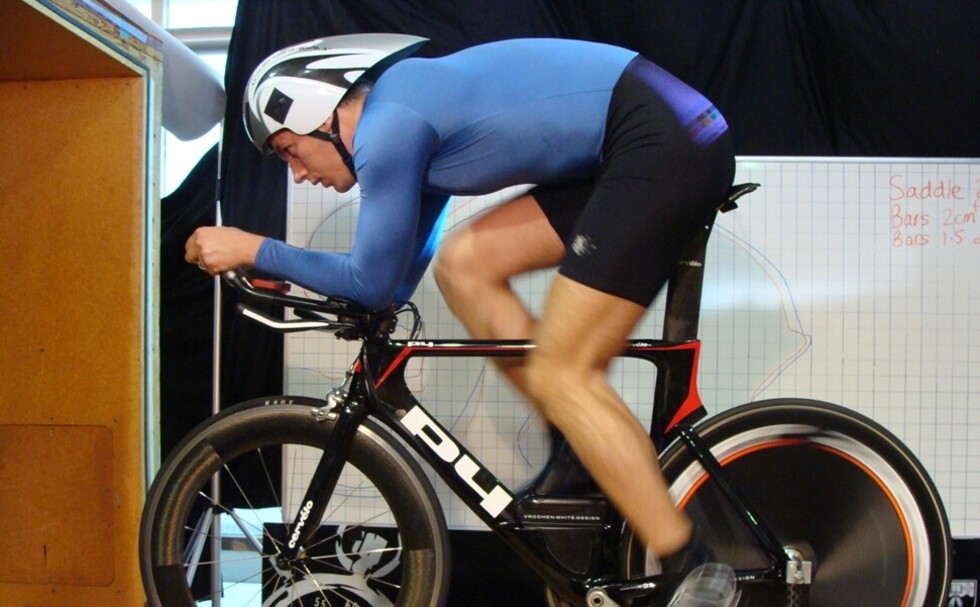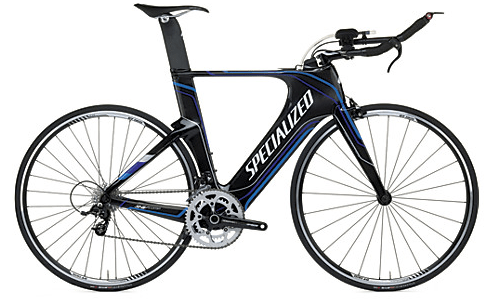The last few weeks have been pretty exciting in the world of triathlon bikes. First Craig Alexander is seen on a Cervelo P4 which he then used to win the Ironman 70.3 World Champs. Specialized then stepped in to get him on their new bike. His subsequent third win at Kona (Ironman World Champs) was the culmination of an extremely slick release of the new bike.
That bike is the Shiv Tri which brings some very cool features to the market. Of course, the moment they released their data I started plugging it into spreadsheets and will now share what I learned.
The most attention grabbing feature of the Shiv Tri is the ‘Fuelselage’ – a bladder hidden in the downtube with a drinking tube that emerges from behind the stem. This feature has led to the new bike being referred to as the ‘CamelShiv’ in some quarters.
Specialized Aero DataSpecialized supplied aero data comparing the Shiv Tri and Shiv TT (original Shiv). As you’ll see in the chart the performance levels of the 2011 Shiv (with the UCI illegal nosecone), the 2012 Shiv TT and 2012 Shiv Tri are all very close. The Shiv Tri tracks very closely to the 2011 Shiv at most wind angles.
This is an achievement on its own. The Shiv Tri does not have the stem inline with the top tube as the Shiv TT does and is generally designed as a much more pragmatic (and cheaper) solution for the average triathlete user rather than the dedicated time triallist. Shiv Data with Cervelo bottle test added. What’s really cool is taking into account the cost of carrying a bottle on the Shiv TT. For this we refer to data released by Cervelo, with the caveat that using data from different wind tunnels and different test protocols is not scientific best practice. But we’re only looking for an idea of the effect of a bottle, not awarding the “Worlds Fastest Bike’ title so I think we’ll be OK.
Shiv Data with Cervelo bottle test added. What’s really cool is taking into account the cost of carrying a bottle on the Shiv TT. For this we refer to data released by Cervelo, with the caveat that using data from different wind tunnels and different test protocols is not scientific best practice. But we’re only looking for an idea of the effect of a bottle, not awarding the “Worlds Fastest Bike’ title so I think we’ll be OK.
What you now see is that the Shiv Tri is significantly faster than the 2011 Shiv when you need to carry fluid (as you might wish to do in a triathlon).
Unfortunately, the penalty for this is that the Shiv Tri is not UCI legal, so there’s no point in boasting to your TT buddies that your Tri bike is faster as you wouldn’t be allowed to use it in their races to prove it.
This is what I find most exciting about the new tri bikes that are coming out. The manufacturers are taking a holistic view of how the bikes actually get used and are optimising their designs based on that. So we get bikes that can carry nutrition at little or no aero penalty.
 Notice the Shiv sits higher than the rest of the market. Further to that, the geometry of the Shiv Tri is overall taller than any other Tri bike. That, along with the thought that has gone into the handlebar design, significantly aids the bike fitter in setting one of these bikes up for a wider variety of riders.
Notice the Shiv sits higher than the rest of the market. Further to that, the geometry of the Shiv Tri is overall taller than any other Tri bike. That, along with the thought that has gone into the handlebar design, significantly aids the bike fitter in setting one of these bikes up for a wider variety of riders.
While those of us who favour significant drop will either be excluded from using this bike or have to resort to down angled stems, for the majority of triathletes this bike offers the capability to replace un-aero headset spacers with nice sculpted headtube. And the satisfaction of knowing that, rather than being a dumbed down version (as higher stack bike models often are), this is a world champion worthy piece of kit.


